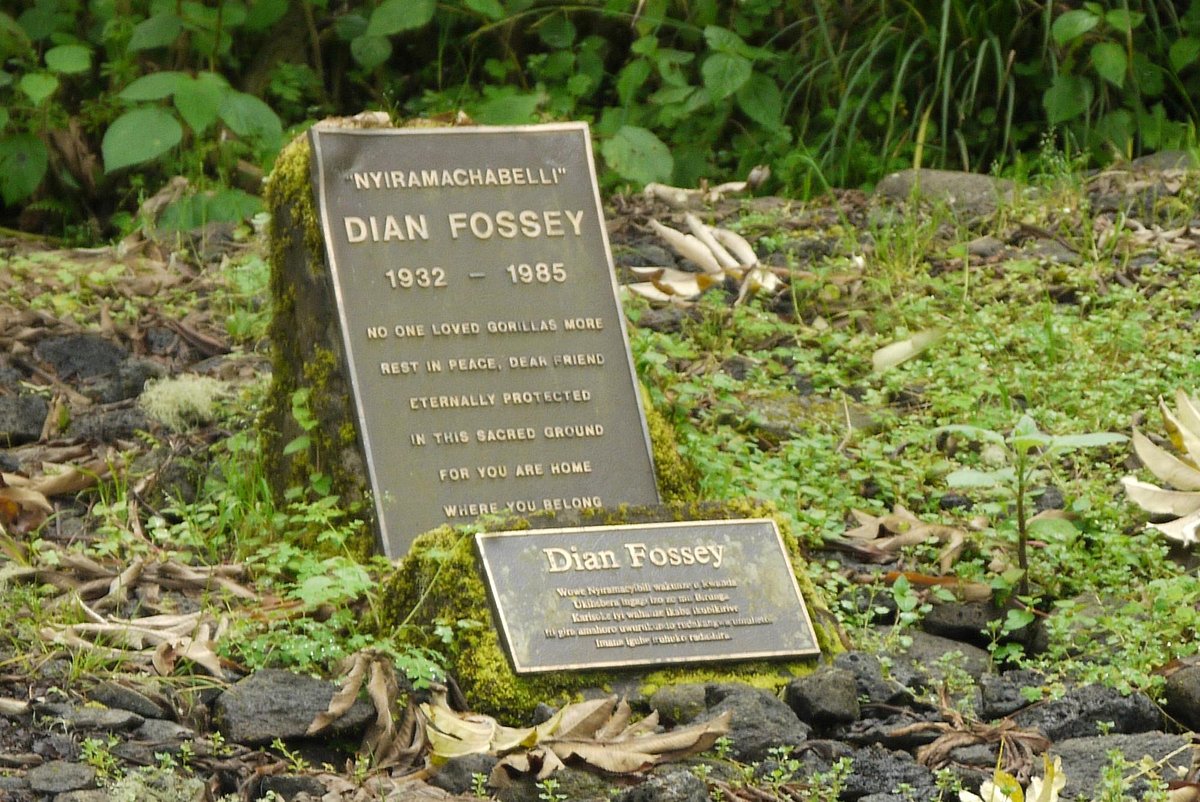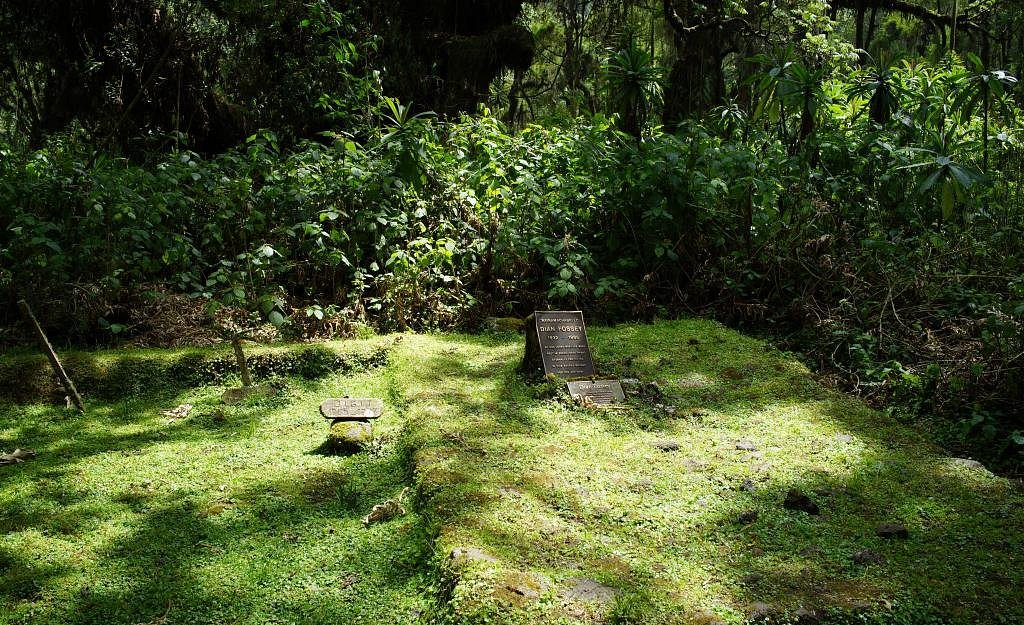Facts concerning Dian Fossey (“The Gorillas’ Champion”)
An exceptional woman embarked on a mission to shed more light on our close relatives in the animal kingdom, venturing into the mist-covered forests of the Virunga Mountains in central Africa. Dian Fossey Facts & Biography reveal her as a dedicated conservationist and primatologist, renowned for her groundbreaking research on mountain gorilla groups. Born on January 16, 1932, in San Francisco, California, her life was tragically cut short in December 1985, but her legacy endures.Fossey’s fascination with animals began at a young age, inspiring her to pursue a career in zoology. Her encounter with a gorilla changed her trajectory forever. In 1963, she moved to the Democratic Republic of the Congo to immerse herself in studying the lives of these fascinating creatures. As her work deepened, she became engrossed in observing mountain gorilla behaviour and social dynamics.
Understanding the threats posed to these species, including poaching and habitat destruction, Fossey dedicated her life to their protection. Her relentless advocacy earned her the title, “The Gorillas’ Champion.” By exploring Dian Fossey Facts & Biography, one discovers her indomitable spirit and the significant strides she made in wildlife conservation.
The Lost Film of Dian Fossey DOCUMENTARY (2002)
Dian Fossey’s Early Life and Connection with Animals
Dian Fossey experienced rejection as a child, which played a significant role in shaping her future. Born in San Francisco, California, in 1932, her parents divorced when she was barely 6 years old. Her mother soon remarried Richard Price, a businessman who never fully accepted Dian as his own. Her stepfather’s rejection was evident, as he did not allow her to sit at the table with him during meals. Unable to contact her biological father and lacking emotional support from a father figure, Fossey struggled with personal insecurities. To bridge this emotional gap, she turned to animals for acceptance, developing a strong attachment to them from a young age. She kept pets and began horseback riding lessons at 6, which later led to her earning a letter on her high school riding team.
Establishing the Karisoke Research Center
Dian Fossey’s unwavering devotion to mountain gorillas led her to establish the Karisoke Research Center in Rwanda in 1967. Located in the Virunga Mountains, the center’s name was inspired by the nearby volcanoes, Mount Karisimbi and Mount Bisoke. At Karisoke, Fossey conducted extensive research on gorilla behaviour, ecology, and social interactions, making it a hub for scientific studies on these magnificent creatures. The center played a vital role in protecting the gorillas and became instrumental in enforcing anti-poaching initiatives that Fossey passionately championed.
Living Among the Gorillas in the Virunga Mountains
Fossey spent her days living in the Virunga Mountains in a small tent to remain close to the gorillas. This allowed her to study their diet, behaviour, and social structures up close. Her living conditions were challenging; the canvas tent contained only basic supplies, and she endured harsh weather, wild animals, and insects. Despite these difficulties, Fossey’s resolve to study and protect mountain gorillas remained unshaken. Her sacrifices were extraordinary, as she created deep connections with the gorillas and became one of the world’s foremost experts on mountain gorillas.
Anti-Poaching Efforts and Gorilla Conservation
Dian Fossey dedicated her life to ensuring the survival of the endangered mountain gorillas, whose numbers were drastically reduced by poaching. Gorillas were hunted for body parts such as their skulls and hands, which were sold for profit. Fossey led anti-poaching patrols in the area, working tirelessly to dismantle traps, confiscate poaching equipment, and engage local communities in conservation efforts. Her innovative “active conservation” strategies included scaring off poachers, burning snares, and spray-painting cattle to deter herders from encroaching on gorilla habitats. Fossey’s relentless commitment to anti-poaching initiatives made a significant impact, though her methods were often controversial.
Dian Fossey’s legacy, as seen through the creation of the Karisoke Research Center and her groundbreaking anti-poaching efforts, continues to inspire conservationists around the world. Her deep connection with animals, formed during a childhood of rejection, ultimately led to a lifelong mission to protect the mountain gorillas she so dearly loved.
Aggressive Tactics to Protect Gorillas
Another remarkable Dian Fossey fact is her fearless and often controversial approach to protecting mountain gorillas. Fossey was highly vocal and aggressive in her methods, taking a stand against poaching and habitat destruction. She used unconventional techniques to deter poachers, such as burning their snares and setting traps to catch them. Fossey also collaborated with local authorities to apprehend and punish poachers severely. To further safeguard the gorillas, she employed guards to patrol the forest at night, ensuring their safety from harm. Her unwavering determination made her a formidable advocate for gorilla conservation.
Her Legacy Through the Gorillas of the Virunga Mountains
Dian Fossey’s connection with mountain gorillas was profound, and one of the most notable Dian Fossey facts is her ability to form close bonds with these creatures. She dedicated her life to studying and protecting them, creating innovative conservation strategies that significantly impacted their survival. Fossey’s work brought international attention to the plight of mountain gorillas and laid the groundwork for their continued protection.
Tragic and Mysterious Death in 1985
Fossey’s life came to a shocking end when she was murdered in her cabin in 1985. This tragic event remains one of the most unsettling Dian Fossey facts, as her murder was never solved, and no one was ever held accountable. Her body was found with multiple stab wounds, leaving the conservation community and the world in mourning. Despite this, Fossey’s legacy lives on through the continued efforts to protect mountain gorillas and the lasting impact of her work.
Dian Fossey’s story is filled with courage, passion, and sacrifice, making these Dian Fossey facts a testament to her enduring influence on wildlife conservation. Her contributions have inspired countless individuals to protect endangered species and carry forward her mission.
In 1988, a movie based on her book “Gorillas in the Mist” was released.
Dian had an unfathomable affection for the mountain gorillas. She wrote the book “Gorillas in the Mist,” which was released two years before her death, simply to discuss more about these animals. In 1988, Sigourney Weaver played Fossey in the cinematic adaptation of the book. The film has made a significant contribution to increasing public awareness of the gorillas’ predicament and offering advice on how to care for these endearing creatures. In addition, the book has received widespread recognition and was awarded the Golden Globe for Best Motion Picture—Drama.
Fossey grew close to a gorilla named Digit.
Fossey formed a close relationship with Digit, a mountain gorilla. During her early study days in 1967, Fossey first came into contact with Digit, an adult male gorilla. They bonded deeply, and Digit ended up being his favourite gorilla. She kept a tight eye on him and included him in his main research project. With time, Fossey grew to have strong feelings for Digit and frequently referred to him as a buddy. Their partnership was short-lived since Digit was killed by poachers in 1977. Her research career suffered greatly after his passing.
Fossey founded the Digit Fund in memory of her favourite gorilla.
Digit passed away tragically, leaving a hole in her research. His passing strengthened her resolve to combat unlawful hunting and gorilla poaching. Because of her tenacity and spirit, she founded the Digit Fund to aid in anti-poaching endeavours. The fund has contributed to the population growth of gorillas in the highlands and the implementation of conservation measures.
She was buried in a gravesite next to her favourite gorilla, “Digit.”
After being killed in her cabin in 1985, Diane Fossey was buried next to her favourite gorilla, “Digit.” Her favourite gorilla, Digit, who had been slain by poachers in 1977, was buried next to her tomb in Rwanda. In the Virunga Mountains, the graveyard lies close to the Karisoke Research Centre. Over time, the burial has developed into a popular tourist destination where people can visit and honour Fossey.
The first scientist to examine gorillas in their natural environments was Fossey.
Primatology was pioneered by Fossey. She was the first to conduct research on mountain gorillas in their native environments. She had the opportunity to live near the animals and observe their interactions and behaviours. Fossey contributed to raising awareness of the need to protect gorillas after studying these wonderful animals. Future generations will find enormous inspiration in her studies.
She Prevented the Extinction of the Mountain Gorilla
One of the most impactful Dian Fossey facts is her pivotal role in saving mountain gorillas from extinction. When Fossey first arrived in Africa to study these creatures, their numbers were rapidly dwindling due to poaching and habitat loss. Poachers targeted gorillas for their body parts, which were traded illegally. Fossey’s efforts to combat poaching and preserve their natural habitat helped reverse the trend. Today, thanks to her tireless advocacy and conservation efforts, mountain gorilla populations have doubled.
The Dian Fossey Gorilla Funds Have Doubled Gorilla Populations
A vital Dian Fossey fact is the legacy she left behind through the Dian Fossey Gorilla Fund. After her passing, this organization continued her mission by reducing poaching, educating people about the importance of gorillas, and preventing deforestation. These efforts have been instrumental in ensuring the survival of this endangered species, promoting population growth, and establishing a brighter future for mountain gorillas.
She Identified Gorillas by Their Noses
Among the fascinating Dian Fossey facts is her unique method for identifying individual gorillas. Each gorilla has a distinctive pattern of creases around its nose, which Fossey used to differentiate between them. She named the gorillas she studied, including memorable names like Digit, Uncle Bert, Rafiki, and Peanut. This personal touch reflected her deep bond with the creatures and helped her document their lives in unprecedented detail.
She Unveiled the True Nature of Gorillas
Before Fossey’s groundbreaking research, gorillas were often mischaracterized as violent and dangerous creatures, similar to the fictional King Kong. However, one of the most transformative Dian Fossey facts is her discovery of the gorillas’ real nature. Fossey revealed that these majestic animals are gentle, social, and intelligent. By mimicking their behaviors—such as knuckle-walking and nibbling on celery stalks—she earned their trust and demonstrated that gorillas are among the least aggressive members of the great ape family. Her work profoundly changed public perception of these animals.
She Was an Award-Winning Horsewoman
Not all Dian Fossey facts are tied to gorillas; her early life showcased her love for animals in other ways. As a child, Fossey developed a passion for horses and began riding at the age of six. She went on to compete in horse shows, winning numerous awards, including the California State Championship in 1954. This early connection to animals foreshadowed her later career as a dedicated primatologist.
She Risked Everything to Travel to Africa
Dian Fossey’s determination to follow her dream is among the most inspiring Dian Fossey facts. She saved all her earnings, sold her possessions, and left her paying job to travel to Africa. She had no contacts or connections there, only an unshakable desire to study animals in their natural habitat. This bold decision marked a turning point in her life, allowing her to fulfill her aspirations while leaving an indelible impact on the future of mountain gorillas.
Her Legacy Changed Our Understanding of Gorillas
Fossey’s work revealed that gorillas are compassionate, family-oriented, and intelligent beings. By documenting their social behaviors and interactions, she demonstrated their close connection to humans and the need for their protection. This Dian Fossey fact has reshaped how the world views gorillas, fostering greater appreciation and care for these remarkable animals.
Her initial expedition was halted due to a poacher attack.
The achievements of Dian Fossey are not without their share of difficulties. Giving her life to preserve and research these species included risking her own life for them. Poachers attacked her on the first day she was conducting research in Rwanda’s Virunga Mountains. She returned to carry out further research, though, because she remained resolute in her pursuit of the goal. She started speaking out a lot in favour of the necessity of gorilla conservation.
Dian Fossey was a controversial figure.
Fossey was a contentious and deeply committed primatologist. Her enthusiasm for mountain gorillas was evident in her unwavering determination. She confronted the poachers with great aggression and showed no reluctance to use force. She was frequently chastised by other conservationists for being overly combative, but she insisted that it was essential to eradicate poaching in the region.
Thanks to her outstanding efforts to ensure the protection of mountain gorillas, Dian Fossey was a respected and esteemed person. Since then, the threat of extinction has been eliminated thanks to her work to protect mountain gorillas. The numbers of the almost extinct species have now doubled as a result of her efforts. Future generations will be forever impacted by her legacy, which will serve as the foundation for additional investigation into these unusual species.

Dian Fossey Tomb

Facts concerning Dian Fossey|Tomb|Digit
Customize your dream safari now!
Contact us directly via email or fill out our form.
Don’t wait; let’s start planning your perfect Gorilla trekking adventure!

